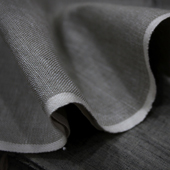Kannur is the land of looms and lore, a small town in the southern part of India and a district in the northern part of Kerala. Kannur is formerly known as Cannanore during the British raj and is the one and only place in the whole of India which was targeted by Portuguese, Dutch, French, British and Germans and used for trading by Arabs, Hebrews, Persians, etc.
Etymologically the name Kannur may have been derived from Kanathur, an ancient village. Another opinion holds that Kannur was originally a portmanteau derived from two Malayalam words 'Kannan' Lord Krishna, a Hindu deity and 'Ur' means the place which combines and gives a meaning 'The place of Lord Krishna'.
Historical evidence shows that Kannur was a very prominent place in south India and owned by the ancient Mushika dynasty which is referred to in a Sanskrit literary work ‘mushikavamsam’ by poet Atula and also mentioned in the Indian epic Mahabharata as one of the prevailing dynasties from southern India. Later on, the Mushika dynasty was known as Kolathiris therefore the place was called ‘kolathunadu’. In later times it was known as Chirakkals Rajya. Kannur was an important trading center in the 12th century with active business connections with Persia and Arabia. The 14th century narrative of Ibn Battuta had mentioned about Kannur in his travelogue and in the 16th century AD, a Portuguese official Duarte Barbosa also mentions about Kannur in his records. Since then even Kannur handloom fabric was one of the hot selling commodities overseas. Due to its unending relation with handloom industry, it is known as 'Town of export excellence'. The industry is spread in 37 Panchayat and 5 Municipalities. There is ample scope for fabrics in world market, which is exclusively reserved for handloom industry. Because of quality and fame of Kannur handlooms, Kannur is commonly known as the 'Manchester of Kerala'.
History:
There are three streams of historical incidence pointing towards the tradition, origin and development of Kannur handlooms. First stream of historical stories is that the weaving tradition started between 16th and 17th centuries when the Kolathiri Raja, the ruler of Chirakkal in Kannur, brought some weaver families from Cheranadu in Tamil Nadu. These people settled at Kadalayi Theru, in Kannur and this resulted in the establishment of first Saliya Theru in Kannur. The weavers had mainly produced woven fabrics for the temples and the royal people. The weaver families developed their social life in the district and became a major workforce and the main products were thorthu (towel), panimundu (lower cloth), and mundu (dhoti).
Second stream of the story dates back to 1844, when frame looms were introduced by Basel mission which was brought from Germany. In 1852, development in this loom started with the use of fly shuttles and from this time onwards the Malabar frame looms came to be used in their present form. The product produced by them was mission mundu. The third stream of incidence originated from the social reform movements. The activities of Vagbhatananda guru and Sree Narayana Guru, a movement led to the reformation of the ‘Thiyya’ community with evidence in their social life and as well as in involvement in the industrial activities. Among these, handloom weaving was a prominent one with hundreds of people engaged in it. The social reform movements at the time of independence gave an organized structure to handloom weavers by bringing them into the fold of cooperative societies. During those days the rulers brought weavers for satisfying their clothing needs. Trained weavers took up the work due to social compulsion of employment. They integrated into and got organized as an industrial segment through the cooperative movement for satisfying their needs. Years later the weavers from Kannur had developed ‘Kannur crape’ which blew their fame into the skyscrapers in the country as well as overseas. In the 1960s, 70s and 80s Kannur crape was the hottest selling fabric in UK and USA.

